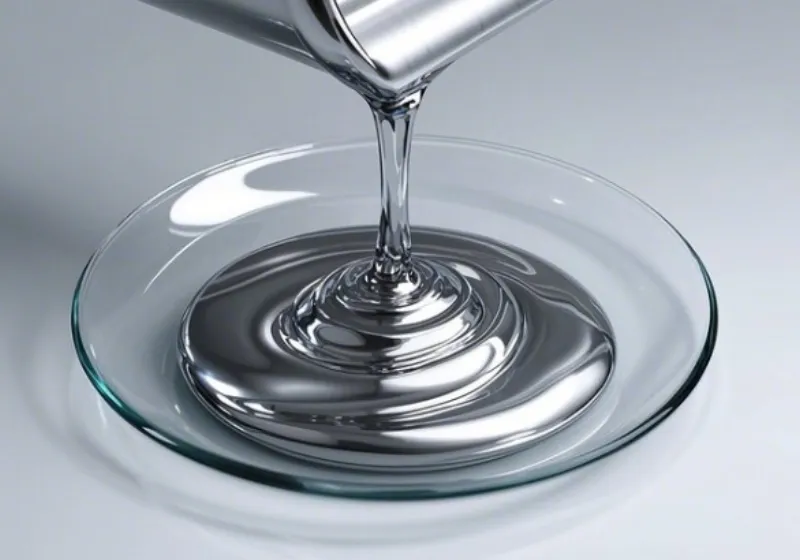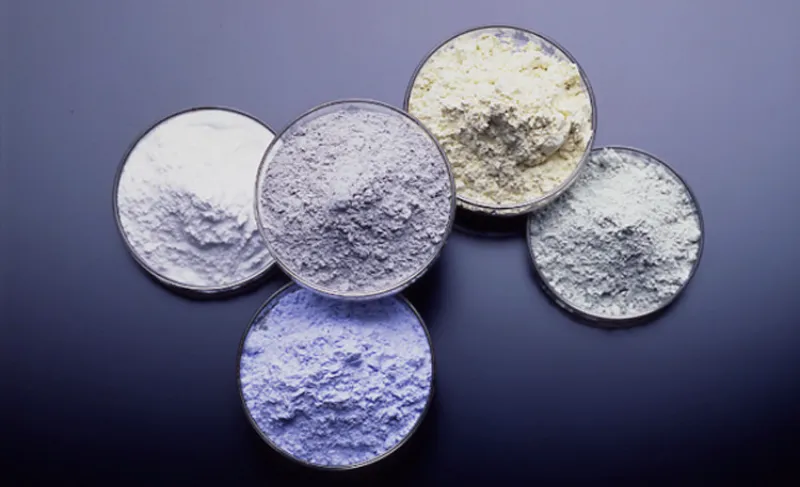ইলেকট্রনিক পেস্ট হল পেস্টের মতো বা এর জন্য একটি সাধারণ শব্দ তরল ইলেকট্রনিক উপকরণ। এটি সাধারণত স্ক্রিন প্রিন্টিং, ইঙ্কজেট প্রিন্টিং, আবরণ, প্যাড প্রিন্টিং, অথবা 3D প্রিন্টিং। পেস্টটি সিরামিক, কাচ, পলিমার ফিল্ম, সিলিকন ওয়েফার, অথবা ধাতব বেসের মতো সাবস্ট্রেটের উপর জমা হয়। সিন্টারিং বা কিউরিংয়ের পরে, এটি কার্যকরী ফিল্ম বা প্যাটার্ন তৈরি করে।
এটি পুরু-ফিল্ম সার্কিট, MLCC, মাল্টিলেয়ার চিপ ইন্ডাক্টর, ফটোভোলটাইক কোষ, সেমিকন্ডাক্টর প্যাকেজিং, ডিসপ্লে ডিভাইস এবং সেন্সরে ব্যাপকভাবে ব্যবহৃত হয়। এই পেস্টটি পরিবাহিতা, প্রতিরোধ সমন্বয়, ডাইইলেক্ট্রিক, সুরক্ষা এবং স্বচ্ছ পরিবাহিতার মতো একাধিক ভূমিকা পালন করে।
প্রথম নজরে, ইলেকট্রনিক পেস্ট দেখতে একটি আঠালো ভরের মতো। মূলত, এটি একটি মাল্টিফেজ কম্পোজিট সিস্টেম। এটি সাধারণত কার্যকরী পাউডার, বাইন্ডার এবং জৈব বাহক নিয়ে গঠিত।
বেশিরভাগ পুরু-ফিল্ম পেস্টে, এই সিস্টেমে বিশেষভাবে কার্যকরী পাউডার, কাচের পাউডার এবং জৈব বাহক অন্তর্ভুক্ত থাকে। কার্যকরী পাউডারগুলি বৈদ্যুতিক কর্মক্ষমতা নির্ধারণ করে। কাচের পাউডারগুলি কাঠামোগত স্থিতিশীলতা এবং আনুগত্য প্রদান করে। জৈব বাহকগুলি প্রক্রিয়া অভিযোজনযোগ্যতা নিশ্চিত করে। তিনটি উপাদান ভূমিকায় স্বতন্ত্র কিন্তু পরস্পর নির্ভরশীল। একসাথে, তারা পেস্টের চূড়ান্ত কর্মক্ষমতা সংজ্ঞায়িত করে।
কিছু বিশেষ ক্ষেত্রে, কাচের গুঁড়ো অনুপস্থিত থাকতে পারে। পরিবর্তে, রজন বা স্ব-সিন্টারিং ধাতু কাঠামোগত উপাদান হিসাবে ব্যবহৃত হয়।

কার্যকরী পাউডার - মূল যা কার্যকারিতা নির্ধারণ করে
ইলেকট্রনিক পেস্টে, কার্যকরী পাউডারের ভূমিকা হল বৈদ্যুতিক বৈশিষ্ট্য প্রদান করা। পাউডারের ধরণ সরাসরি ডিভাইসে পেস্টের কার্যকারিতা নির্ধারণ করে। এটি নির্ধারণ করে যে পেস্ট আলো সঞ্চালন করে, প্রতিরোধ করে, অন্তরক করে বা প্রেরণ করে কিনা।
- পরিবাহী পেস্ট: রূপা (Ag), তামা (Cu), নিকেল (Ni), অথবা রূপালী-আবৃত তামার মতো ধাতু। এগুলি পরিবাহী পথ তৈরি করে এবং ইলেকট্রোড হিসেবে কাজ করে।
- প্রতিরোধী পেস্ট: অক্সাইড পাউডার যেমন রুথেনিয়াম অক্সাইড (RuO₂) বা রোডিয়াম অক্সাইড (RhO₂)। এগুলি নিয়ন্ত্রিত প্রতিরোধ ক্ষমতা প্রদান করে।
- ডাইইলেকট্রিক পেস্ট: বেরিয়াম টাইটানেট (BaTiO₃) বা বেরিয়াম স্ট্রন্টিয়াম টাইটানেট (BST) এর মতো পাউডার। এগুলি অন্তরণ এবং চার্জ সঞ্চয় নিশ্চিত করে।
- স্বচ্ছ পরিবাহী পেস্ট: ITO (ইন্ডিয়াম টিন অক্সাইড), সিলভার ন্যানোওয়্যার, অথবা গ্রাফিন। এগুলো আলোর সঞ্চালন বজায় রেখে বৈদ্যুতিক পরিবাহিতা প্রদান করে।
কাচের গুঁড়ো - "বাইন্ডার" এবং "কাঠামোগত নিয়ন্ত্রক"
পেস্ট সূত্রে, কাচের গুঁড়ো মূল ভূমিকা পালন করে না বরং একটি নির্ধারক ভূমিকা পালন করে। সিন্টারিংয়ের সময়, এটি নরম হয়ে প্রবাহিত হয়। অবশেষে এটি সাবস্ট্রেট এবং পাউডারের সাথে শক্ত হয়ে যায়। কাচের গুঁড়ো বাইন্ডার এবং কাঠামোগত নিয়ন্ত্রক উভয়েরই কাজ করে।
এর প্রধান ভূমিকাগুলির মধ্যে রয়েছে:
- আনুগত্য: উচ্চ তাপমাত্রায় কাচ নরম হয়ে যায় এবং ধাতু বা অক্সাইডকে সিরামিক, কাচ বা সিলিকন সাবস্ট্রেটের সাথে আবদ্ধ করে। এটি ছাড়া, ইলেকট্রোডগুলি খোসা ছাড়িয়ে যেতে পারে।
- ঘনীকরণ: এর প্রবাহ কণার মধ্যে শূন্যস্থান পূরণ করে। এটি ফিল্মের ঘনত্ব বৃদ্ধি করে এবং বৈদ্যুতিক স্থিতিশীলতা উন্নত করে।
- তাপীয় সম্প্রসারণ ম্যাচিং: কাচের গঠন সামঞ্জস্য করলে এর প্রসারণ সহগ সাবস্ট্রেটের কাছাকাছি চলে আসে। এটি চাপ কমায় এবং ফাটল বা বিকৃতি রোধ করে।
কার্যকরী পাউডার বৈদ্যুতিক বৈশিষ্ট্য নির্ধারণ করে। কাচের পাউডার নিশ্চিত করে যে এই বৈশিষ্ট্যগুলি স্থিতিশীল এবং দীর্ঘস্থায়ী থাকে।
দ্রষ্টব্য: কাচ, PET, বা PI সাবস্ট্রেটে ব্যবহৃত স্বচ্ছ পরিবাহী পেস্টগুলি প্রায়শই বাইন্ডার হিসাবে ইপোক্সি, অ্যাক্রিলিক বা PU এর মতো পলিমারের উপর নির্ভর করে। এগুলি কাচের গুঁড়ো ছাড়াই কম বা এমনকি ঘরের তাপমাত্রায়ও নিরাময় করে।

ইলেকট্রনিক পেস্টে প্রধান কাচের ব্যবস্থা
| কাচের ধরণ | প্রতিনিধিত্বমূলক ব্যবস্থা | কাচের নরমকরণ বিন্দু (°C) | রাসায়নিক স্থিতিশীলতা | তাপীয় প্রসারণের সহগ (১০°C-১) | সুবিধাদি | অসুবিধা |
| সীসার কাচ | Pb0-Si0,、Pb0-B,0:-Si0.PbO-Zn0-B,0:-Si0, ইত্যাদি | 350-600 | ভালো স্থিতিশীলতা | 70-120 | উচ্চ প্রতিরোধ ক্ষমতা, কম ডাইইলেক্ট্রিক ক্ষয়, কম নরমকরণ তাপমাত্রা এবং ভালো রাসায়নিক স্থিতিশীলতা। | সহজে জারণযোগ্য AIN সিরামিক মানুষ এবং পরিবেশের জন্য উল্লেখযোগ্য ঝুঁকি তৈরি করে। |
| বিসমুথেট গ্লাস | Bi,0;-B,0,-Si0₂、BizO:-B₂0:-BaOBi,0:-Zn0-Si0.Bi,0:-B,0:-Zn0.BizO:-Si0z-Sb,Os等 | 350-500 | ভালো স্থিতিশীলতা | 90-150 | সীসার কাচের মতো উচ্চ বিসমাথ অক্সাইডের নরমকরণ তাপমাত্রা কম এবং রাসায়নিক স্থিতিশীলতা ভালো। | সহজে জারণযোগ্য AIN সিরামিকগুলি ব্যয়বহুল, বিসমাথ বৃষ্টিপাতের ঝুঁকিপূর্ণ এবং অ্যাসিড প্রতিরোধ ক্ষমতা কম। |
| বোরেট গ্লাস | Ba0-B,0:-Si0?Ca0-B,0:-Si0,-Ba0.Si0,-B,0;-AlO;-RO 等 | 300-600 | খুব স্থিতিশীল নয় | 90-150 | নিম্ন গলনাঙ্ক কেবলমাত্র ক্ষারীয় ধাতু, ক্ষারীয় মাটির ধাতু কাচ, অথবা ভারী ধাতু আয়ন যোগ করে অর্জন করা সম্ভব। | এগুলি রাসায়নিকভাবে অস্থির, সাধারণত তাপীয় প্রসারণের উচ্চ সহগ থাকে এবং পর্যায় বিচ্ছেদের ঝুঁকিতে থাকে। |
| দস্তা কাচ | Zn0-B,0;-Si0.Zn0-Ba0-B,0:Zn0-B,0:-Al0:-Si0,等 | 450-600 | ভালো স্থিতিশীলতা | 60-90 | এগুলিতে স্থিতিশীল রাসায়নিক বৈশিষ্ট্য, কম তাপীয় প্রসারণ সহগ, উচ্চ বন্ধন শক্তি এবং কম গলনাঙ্ক রয়েছে। | এগুলির সোল্ডারেবিলিটি কম এবং উচ্চ-তাপমাত্রার ফ্লাক্সিং বৈশিষ্ট্যও কম। |
জৈব বাহক - প্রক্রিয়া নিয়ন্ত্রণের চাবিকাঠি
জৈব বাহক হল দ্রাবক (ওজন অনুসারে 65–98%), ঘনকারী, থিক্সোট্রপিক এজেন্ট, সার্ফ্যাক্ট্যান্ট এবং প্রবাহ সংশোধকগুলির মিশ্রণ। কমপক্ষে, এতে জৈব দ্রাবক এবং ঘনকারী থাকে। সাধারণ দ্রাবকগুলির মধ্যে রয়েছে ডাইথাইলিন গ্লাইকল ইথার অ্যাসিটেট, ট্রাইবিউটাইল সাইট্রেট এবং ডাইবিউটাইল থ্যালেট।
যদিও বাহক বৈদ্যুতিক কার্যক্রমে অবদান রাখে না, তারা প্রক্রিয়াজাতকরণ নিয়ন্ত্রণ করে। তারা রিওলজি এবং সাবস্ট্রেটের সাথে প্রাথমিক আনুগত্য নির্ধারণ করে।
সাম্প্রতিক প্রবণতা কম-অবশিষ্ট, কম গন্ধযুক্ত এবং পরিবেশগতভাবে বন্ধুত্বপূর্ণ বাহকগুলির দিকে। কিছু পণ্য এমনকি সবুজ উৎপাদনের প্রয়োজনীয়তা পূরণের জন্য জল-ভিত্তিক বা অজৈব কলয়েড সিস্টেম গ্রহণ করে।
উপসংহার
কার্যকরী পাউডার ইলেকট্রনিক পেস্টকে তার বৈদ্যুতিক বৈশিষ্ট্য প্রদান করে। কাচের পাউডার এই বৈশিষ্ট্যগুলিকে একটি স্থিতিশীল এবং টেকসই আকারে সুরক্ষিত করে। জৈব বাহক তৈরির সময় প্রক্রিয়াজাতকরণ নিশ্চিত করে। তিনটি অংশই কার্যকারিতার দিক থেকে স্পষ্টভাবে বিভক্ত কিন্তু পরস্পর নির্ভরশীল। একসাথে, তারা একটি সুষম মাল্টিফেজ সিস্টেম গঠন করে।
